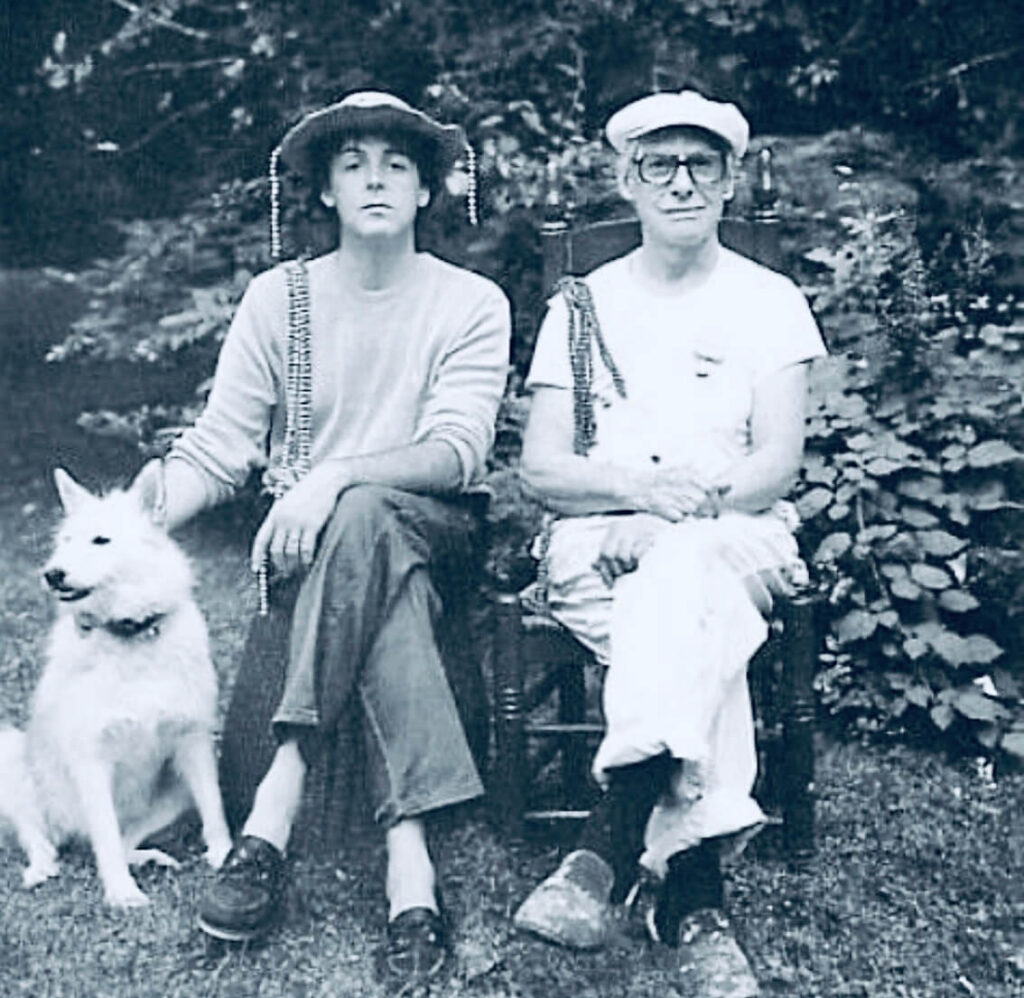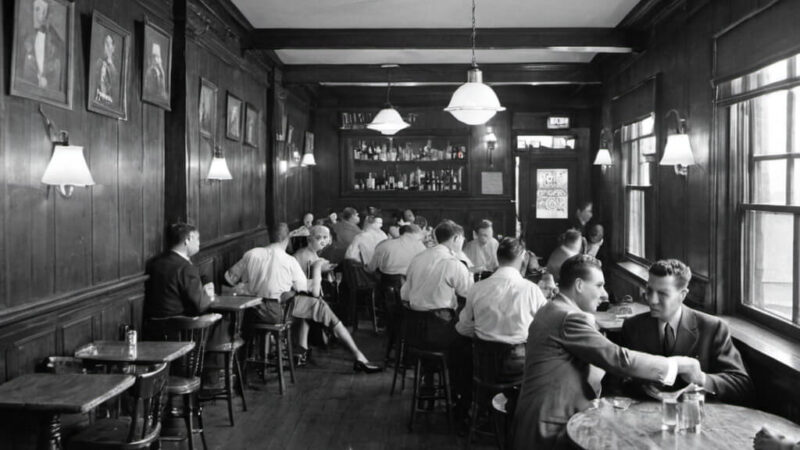Paul McCartney: Visual Artist Painter
Paul McCartney, universally known as a musical legend and a founding member of The Beatles, has also ventured into the world of visual arts, particularly Abstract Expressionism. While his contributions to music are celebrated globally, his foray into painting has garnered a quieter yet intriguing attention. This biography explores McCartney’s life, his unexpected journey into abstract expressionism, and two of his significant artworks, revealing a lesser-known facet of his creative genius.

Early Life and Musical Genius
Born on June 18, 1942, in Liverpool, England, Paul McCartney’s early life was steeped in music. His father was a jazz musician, and McCartney was exposed to various musical influences from a young age. He met John Lennon in 1957 and soon joined his band, The Quarrymen, which later evolved into The Beatles. McCartney’s songwriting partnership with Lennon, combined with his exceptional bass playing and versatile musicianship, propelled The Beatles to unprecedented fame.
Transition to Visual Arts
While McCartney’s musical achievements are well-documented, his interest in visual arts remained relatively private for many years. His journey into painting began in the late 1980s, when he found himself drawn to the expressive and liberating aspects of visual art. Inspired by his late wife, Linda McCartney, who was an accomplished photographer, Paul began experimenting with painting as a new form of creative expression.
McCartney’s initial works were private explorations, but he soon embraced the abstract expressionist style, which he found liberating and cathartic. Abstract expressionism, known for its emphasis on spontaneity, emotion, and individual expression, resonated with McCartney’s artistic sensibilities. His music had always been deeply personal and innovative, and he found a similar freedom in abstract painting.
Influences and Artistic Style
Paul McCartney’s paintings are characterized by bold colors, dynamic compositions, and a sense of spontaneity that mirrors his approach to music. Influenced by abstract expressionist pioneers such as Jackson Pollock and Willem de Kooning, McCartney embraced the movement’s emphasis on the physical act of painting. His works often feature vibrant, swirling patterns and layers of paint applied with a sense of urgency and emotion.
McCartney’s paintings also reflect his interest in surrealism and pop art. He often incorporates elements of these styles into his abstract works, creating compositions that are both visually striking and conceptually intriguing. His use of color is particularly notable, with bold, contrasting hues creating a sense of movement and energy.
Important Artworks
“Bowie Spewing” (1990s)
One of McCartney’s notable works is “Bowie Spewing,” a vibrant and dynamic painting created in the 1990s. The title references his friend and fellow musician David Bowie, and the painting itself is a tribute to Bowie’s flamboyant and eclectic style. The composition features swirling patterns and bold, contrasting colors that create a sense of movement and energy.

“Bowie Spewing” exemplifies McCartney’s ability to capture the essence of his subject through abstract forms. The painting’s vibrant colors and dynamic composition reflect Bowie’s larger-than-life persona and his impact on popular culture. The use of bold brushstrokes and layered paint creates a sense of depth and texture, inviting viewers to explore the intricate patterns and vibrant hues.
The painting also reflects McCartney’s interest in surrealism, with its dreamlike quality and abstract forms. The swirling patterns and vibrant colors create a sense of movement and fluidity, evoking the energy and creativity of both McCartney and Bowie. “Bowie Spewing” is a testament to McCartney’s ability to translate his musical sensibilities into visual art, creating a composition that is both visually compelling and emotionally resonant.
“Yellow Linda with Piano” (2000s)
Another significant work by McCartney is “Yellow Linda with Piano,” created in the 2000s. This painting is a tribute to his late wife, Linda McCartney, who was a constant source of inspiration and support throughout his life. The composition features a stylized figure of Linda, surrounded by vibrant, swirling patterns and a piano.

“Yellow Linda with Piano” is characterized by its bold use of color and dynamic composition. The vibrant yellow background creates a sense of warmth and light, reflecting Linda’s positive influence on McCartney’s life. The swirling patterns and bold brushstrokes create a sense of movement and energy, evoking the emotions and memories associated with Linda.
The inclusion of the piano in the composition is significant, as it reflects Linda’s role in McCartney’s musical career. The stylized figure of Linda is depicted with a sense of grace and elegance, surrounded by the vibrant, abstract forms that characterize McCartney’s style. The painting is both a personal tribute and a celebration of their shared creativity and partnership.
“Yellow Linda with Piano” exemplifies McCartney’s ability to convey deep emotions through abstract forms and vibrant colors. The composition is both visually striking and emotionally resonant, reflecting his love and admiration for Linda. The painting invites viewers to explore the intricate patterns and vibrant hues, creating a rich and immersive visual experience.
Later Career and Legacy
Throughout his later career, McCartney continued to explore and develop his skills as a painter, often working in his studio between music projects. His paintings have been exhibited in various galleries and museums, including the Walker Art Gallery in Liverpool and the Arnolfini Gallery in Bristol. These exhibitions have provided a platform for McCartney to share his visual art with a broader audience, revealing a lesser-known aspect of his creative talent.
McCartney’s contributions to both music and visual art have earned him a unique place in the cultural landscape. While he is best known for his work with The Beatles and his solo music career, his paintings offer a glimpse into his creative process and his ability to express himself through multiple mediums. His ability to transition seamlessly between music and visual art reflects his boundless creativity and his commitment to exploring new forms of expression.
Personal Life and Philosophy
Paul McCartney’s personal life has been marked by his enduring passion for creativity and his commitment to his family. Despite the challenges of fame and public scrutiny, he has remained dedicated to his artistic pursuits and his loved ones. His paintings often reflect his personal experiences and relationships, providing a window into his inner world.
McCartney’s philosophy of art emphasizes the importance of spontaneity, emotion, and individual expression. He believes that art should be a reflection of the artist’s inner life and experiences, and his paintings reflect this belief. His use of bold colors, dynamic compositions, and abstract forms creates a sense of movement and energy, capturing the essence of his subjects and his emotions.
Legacy and Recognition
Paul McCartney’s legacy as an artist extends beyond his contributions to music, encompassing his work as a painter and his influence on the world of contemporary art. His paintings have been recognized for their vibrant colors, dynamic compositions, and emotional depth, earning him a place among notable abstract expressionist artists.
McCartney’s influence extends beyond his own work, as he has inspired generations of artists to explore new forms of expression and to embrace the liberating potential of abstraction. His ability to transition between different artistic mediums reflects his boundless creativity and his commitment to pushing the boundaries of his practice.
Conclusion
Paul McCartney’s artistic journey is a testament to his creativity, resilience, and profound understanding of color and form. Through his innovative use of abstraction and his dynamic compositions, he has created a body of work that continues to inspire and challenge viewers. “Bowie Spewing” and “Yellow Linda with Piano” are just two examples of his ability to convey complex ideas and emotions through abstract forms and vibrant colors. McCartney’s legacy as a master of both music and visual art ensures that his work will continue to resonate with audiences for years to come.




